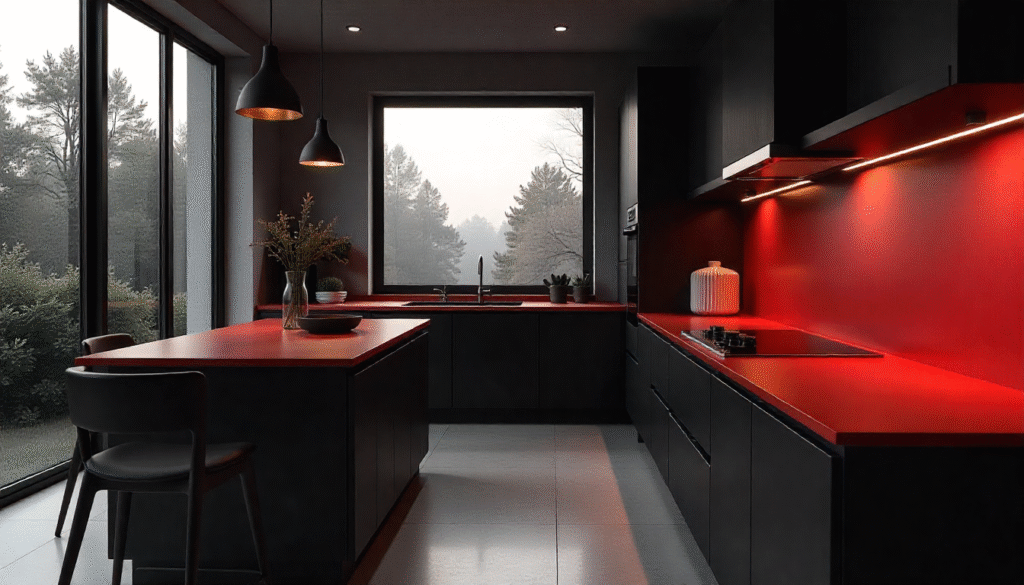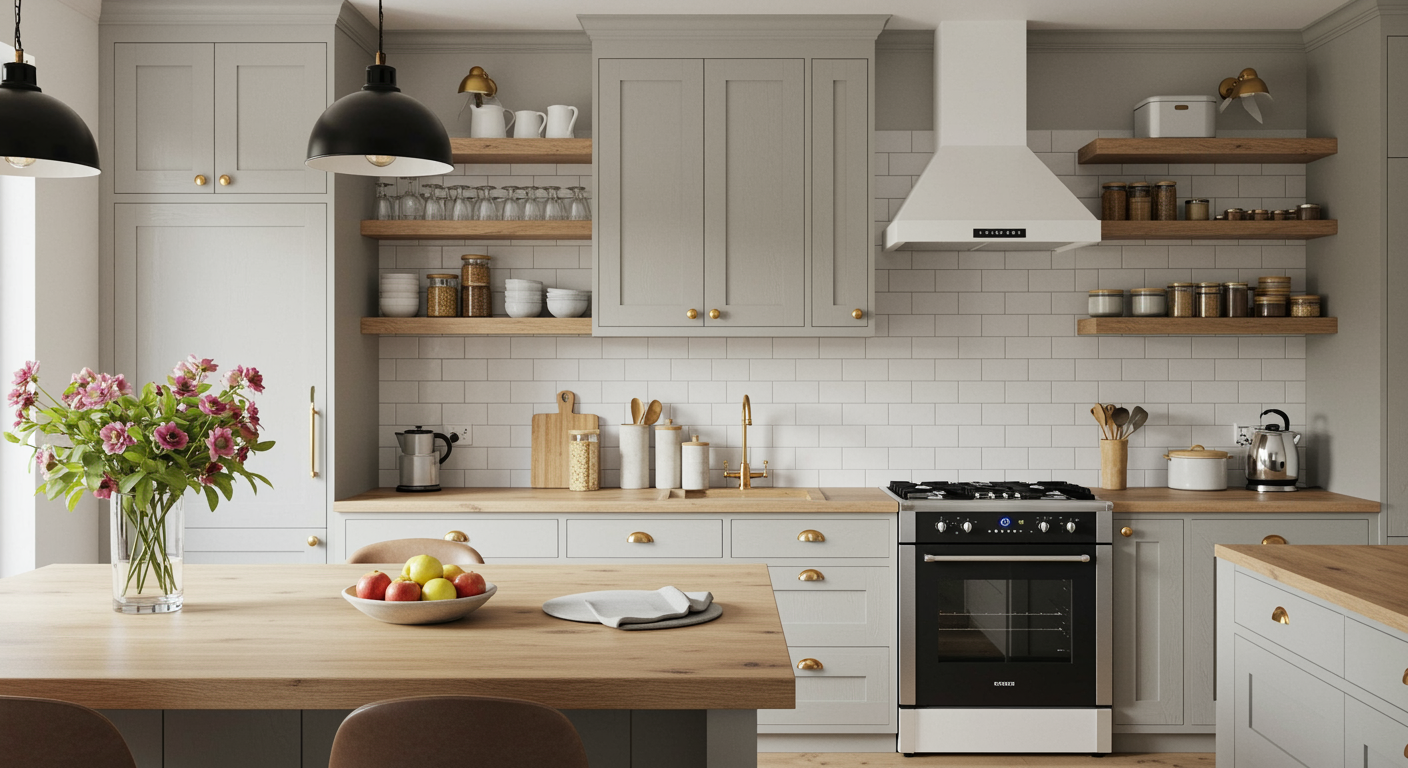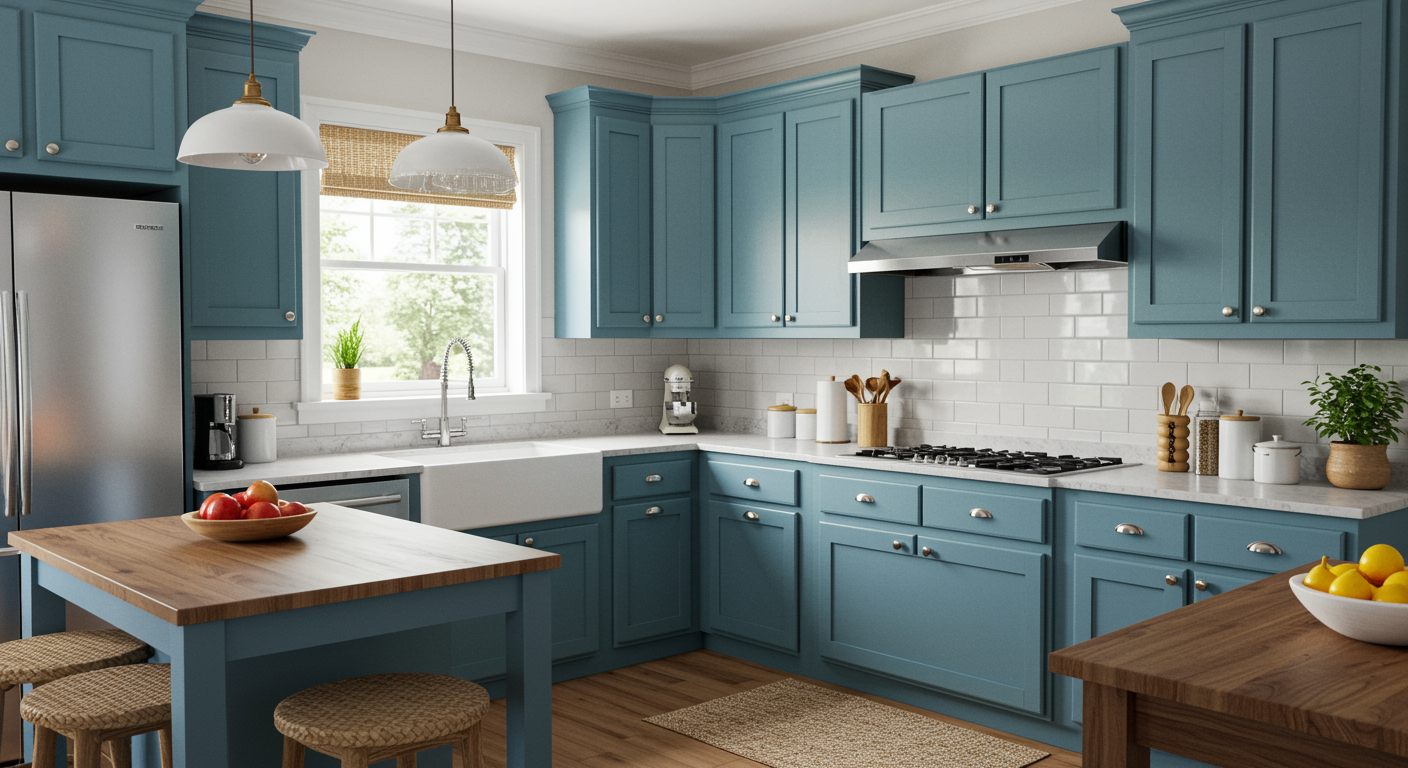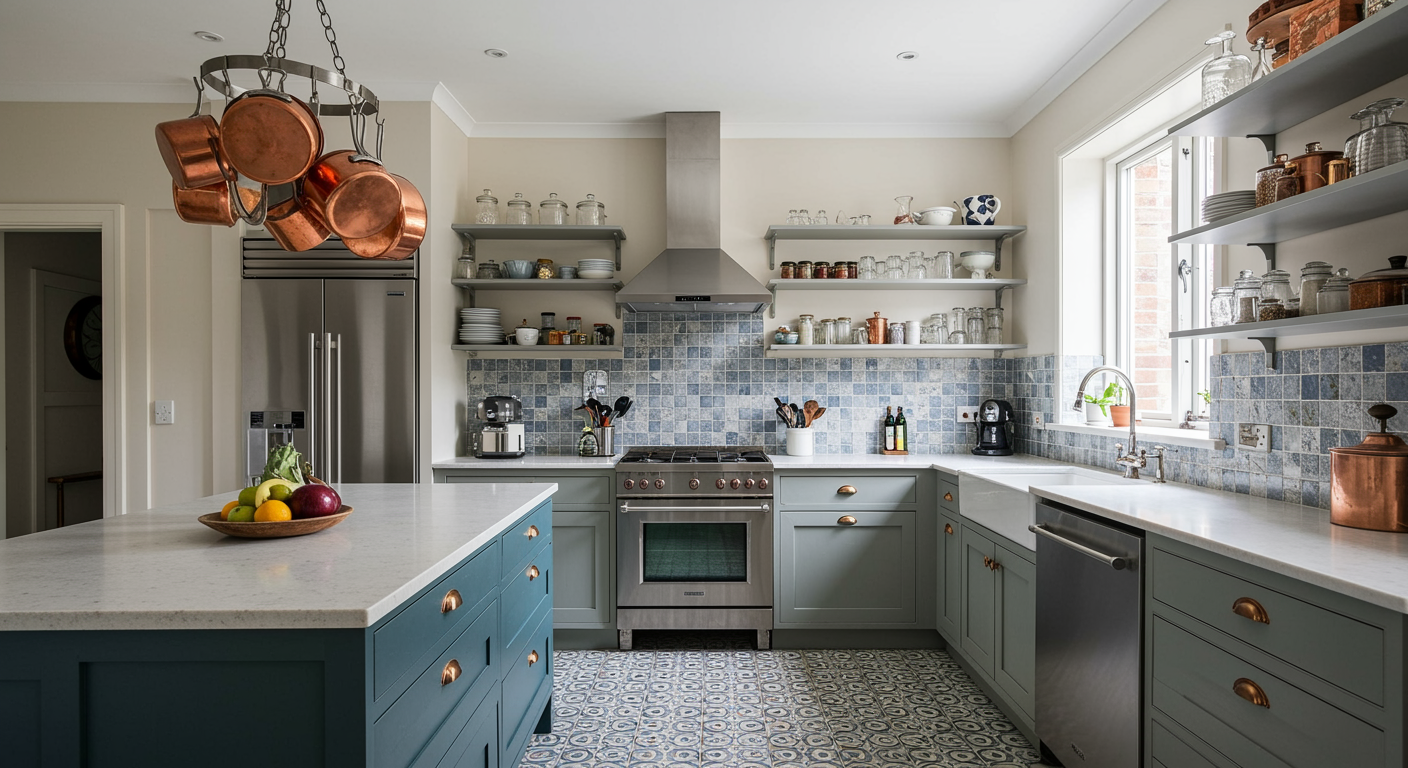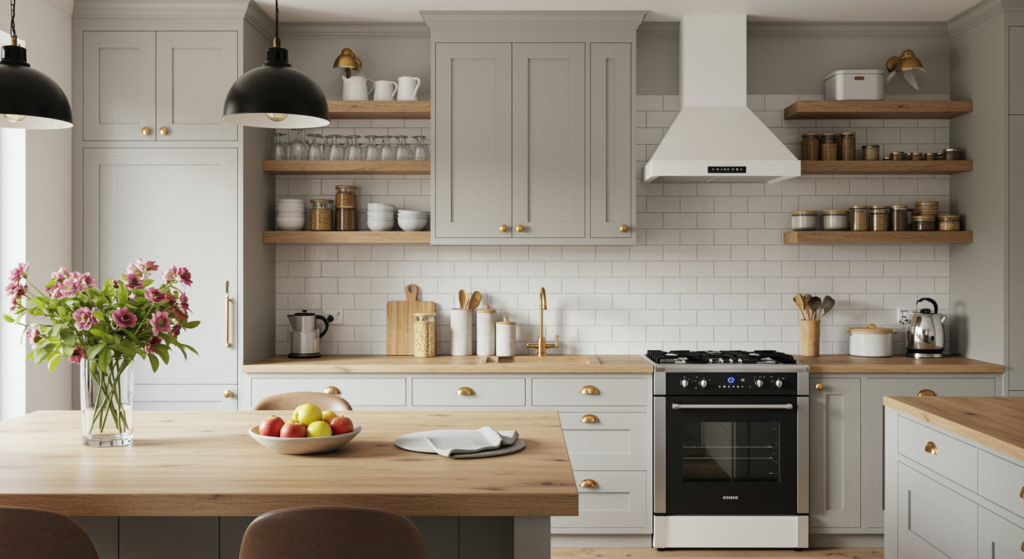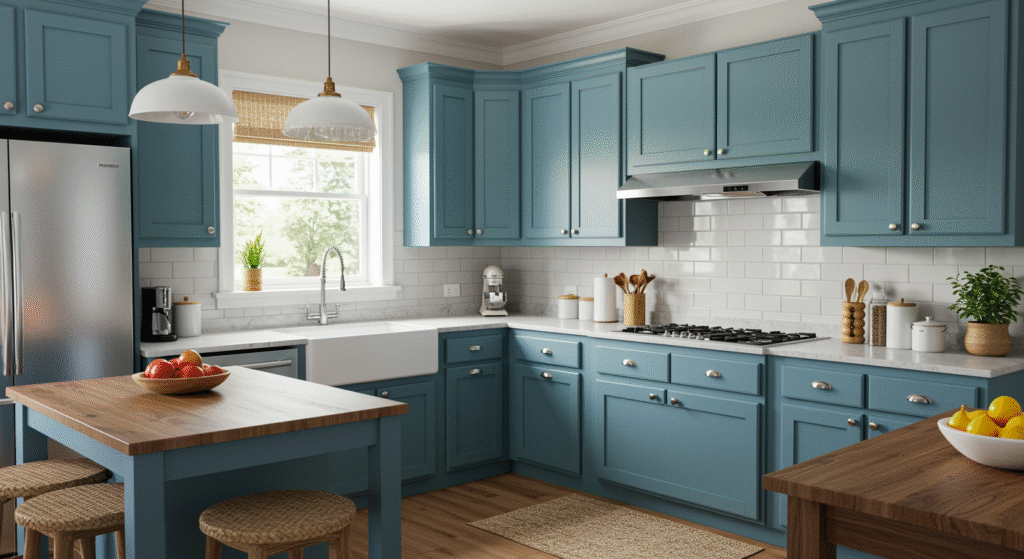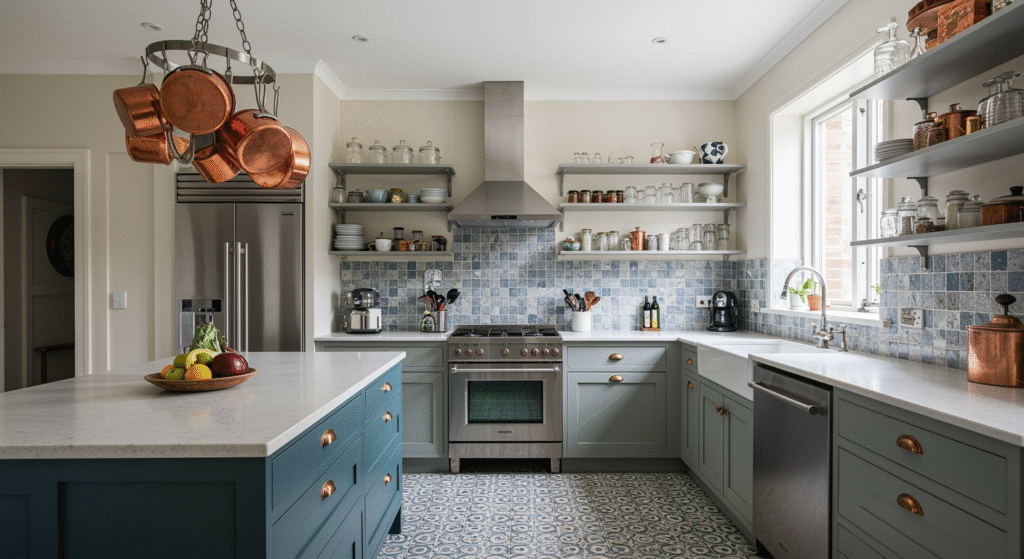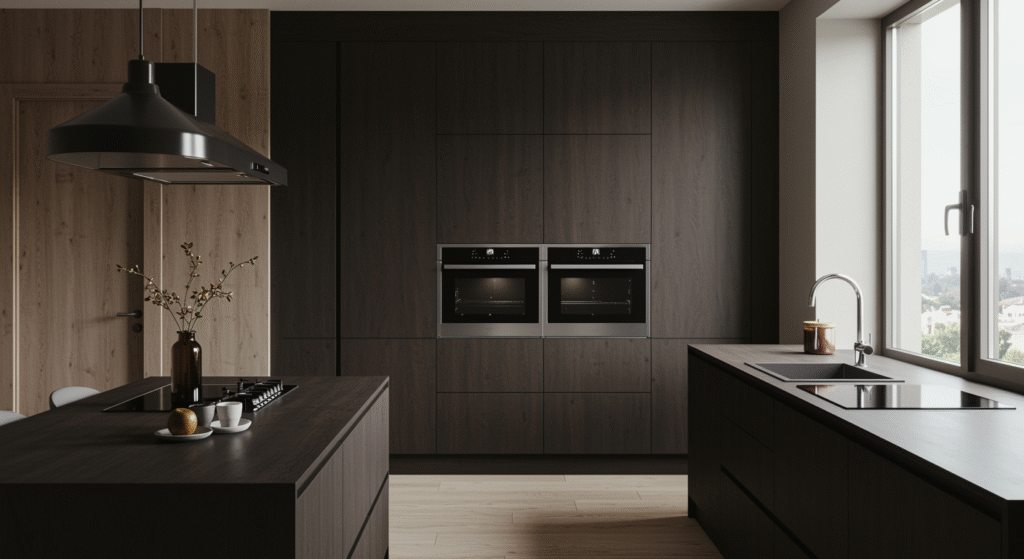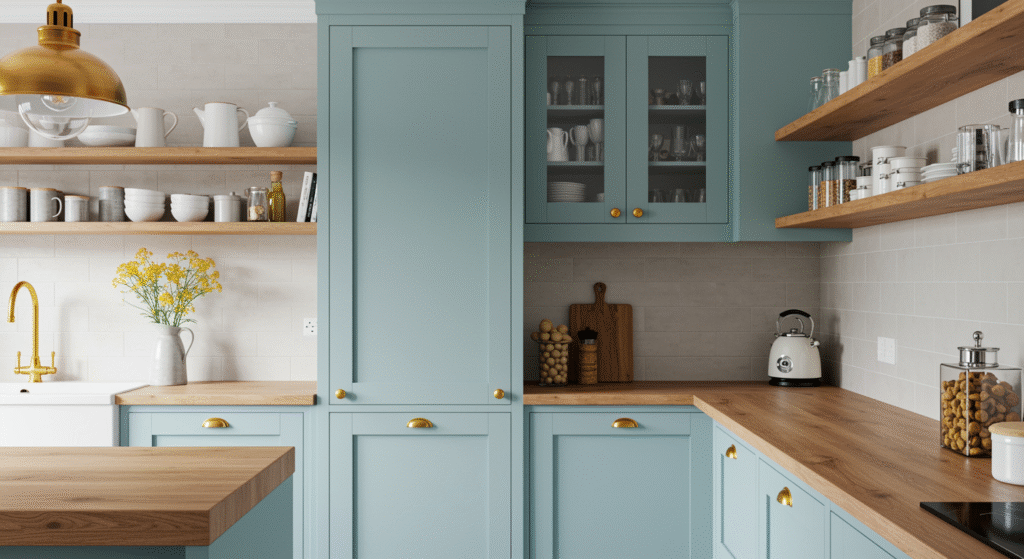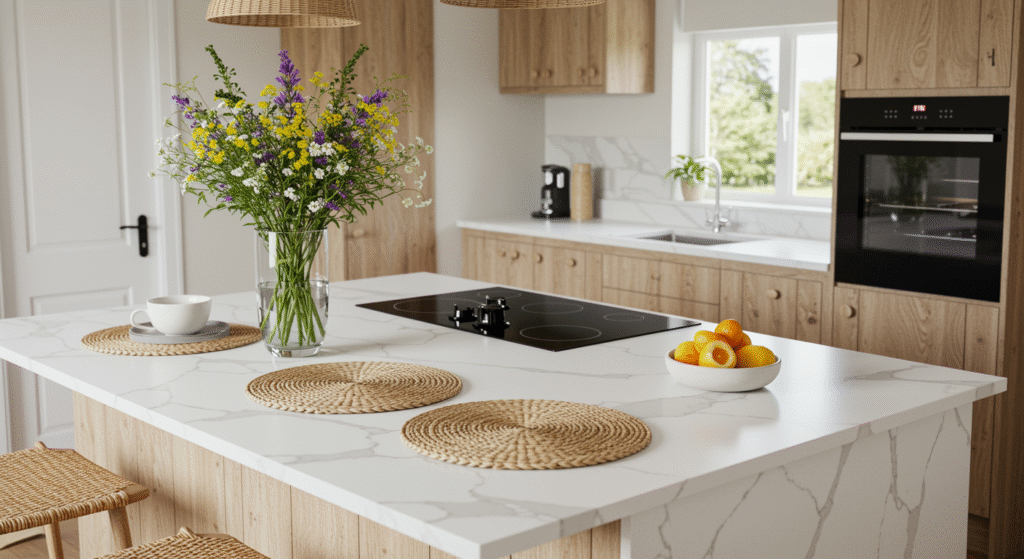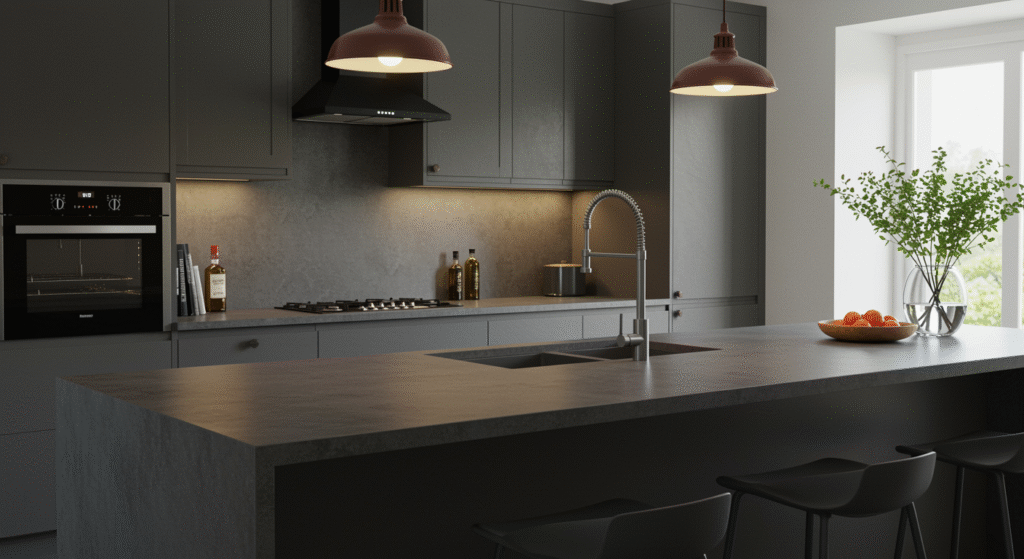The unsafe zone starts when your kitchen becomes a breeding ground for accidents and hygiene concerns because of careless countertop habits. These behaviours subtly invite problem from neglecting raw meat residue to balancing heavy appliances near borders. Cutting these habits not only saves your counter but also helps your kitchen a more secure, more effective place.
The Unsafe Zone 1: Cutting Directly on the Counter
Though it could appear like a simple shortcut, straight cutting on your kitchen countertop is among the most harmful and hazardous actions you could have in the kitchen. It can produce deep scratches or grooves in the surface in addition to rapidly blunting your knives, therefore complicating and increasing the risk of food preparation.
Beyond being unsightly, these flaws provide small fissures where food particles and bacteria can hide, turning your countertop into a breeding ground for germs even after cleaning. Particularly hazardous with porous materials like marble, wood, or laminate, where stains and smells can become nearly impossible to get rid of. Over time, even nonporous materials like quartz or stainless steel can exhibit evident scoring and damage, thereby lowering the lifespan and beauty of your investment.
The habit also raises the possibility of unintended knife slips, which could cause damage. While raw meat juices present significant cross-contamination concerns, acidic fluids from foods like tomatoes or citrus can seep into scrapes and produce discolouration. Simple — always utilise a cutting board—is the safest and most sensible option.
Choose tough materials such bamboo, hardwood, or premium plastic, and separate boards for raw meats and vegetables to prevent the spread of bacteria. Preserving the looks and structural integrity of your countertops helps to make your kitchen a cleaner, safer food preparation area by means of this little modification as well.In essence, your countertop is not a chopping block; treat it with consideration and it will last for years to come.
The Unsafe Zone 2: Skipping Daily Wipe-Downs
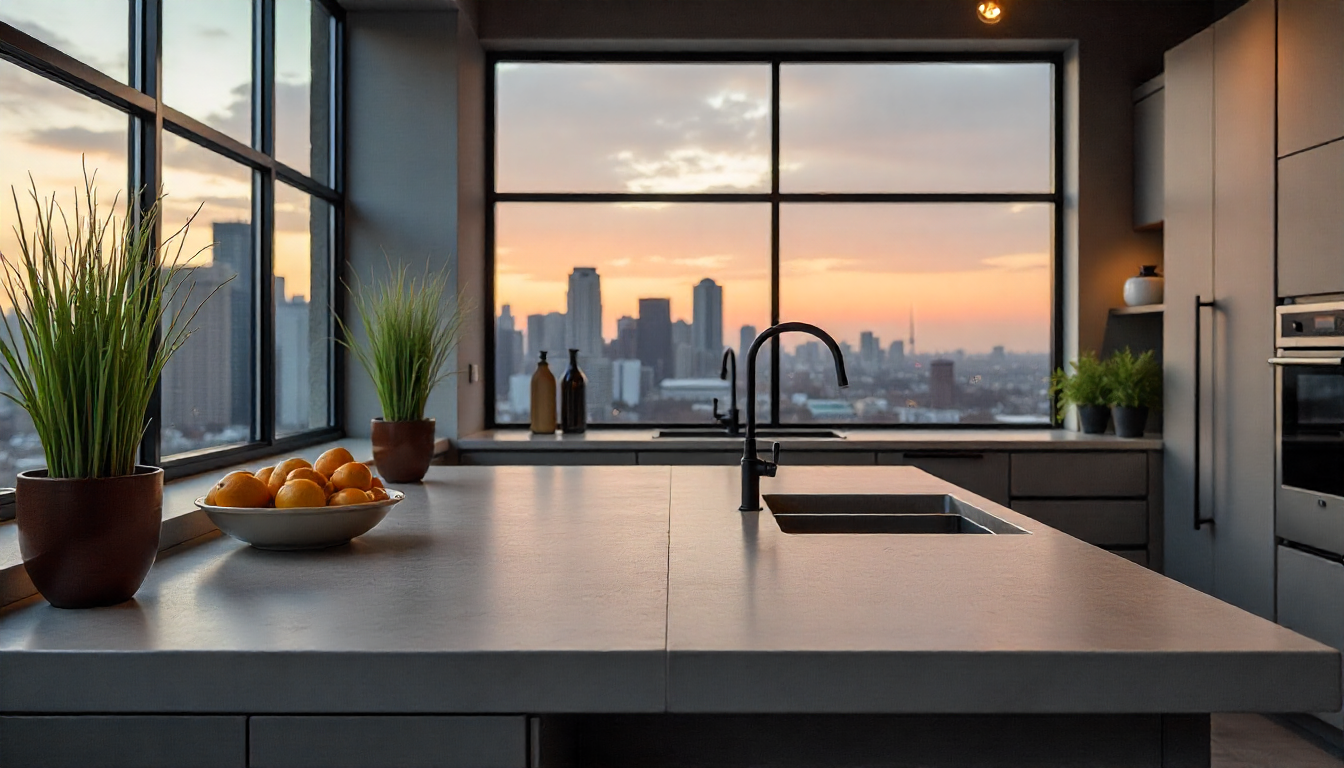
One of the most under appreciated but hazardous countertop behaviours homeowners adopt is skipping daily wipes. Particularly in a bustling kitchen, layers of undetectable germs, fat, and food debris can persist even if a surface seems immaculate.
Countertops are exposed to splashes from cooking, crumbs from snacks, and even airborne particles from chats or sneezes all through the day. These particles become breeding grounds for hazardous bacteria like Salmonella or E. coli if left uncleaned; these can easily transfer to fresh food while cooking. Neglecting daily cleaning also influences the lifespan and aesthetics of your countertop, hence it is not just a health concern.
@ampquartzcabinets Senang kan? Yg nak pasang spice rack tu boleh pm kami 🥳 Ada special promo bulan Merdeka ni 🤩❤️ #AmpQuartz #spicerack #hiddenstorage #kitchencabinet #fyp
♬ original sound – AmpQuartz – AmpQuartz
Unseen spills especially from acidic foods like citrus or tomato sauce over time can etch or discolour the surface; oil residues can dull its sheen. For porous materials such wood or natural stone, trapped moisture can leak in and lead to swelling, warping, or discolouration. Even robust surfaces like stainless steel or quartz might get dull with repeated contact with dirt. Less than two minutes of a swift daily wipe with the proper cleanser preferably one customised to your counter material dramatically enhances cleanliness and protects your investment.
The key is consistency: clean up after every cooking session, pay attention to high touch areas, and avoid letting spills sit overnight. By making daily wipe downs a nonnegotiable habit, you’re not only maintaining the visual appeal of your kitchen but also safeguarding the health of your family and guaranteeing the lifespan of your countertop. Ignoring this stage is a shortcut that just carries too much risk.
The Unsafe Zone 3: Storing Cleaning Chemicals Directly on the Counter
Directly on your kitchen countertop, storing cleaning products seems innocuous but can have long-term effects on your health as well as your surfaces. Designed for food preparation rather than as storage sites for ammonia, chlorine, or acid cleaning agents, kitchen countertops are meant to.
These products left sitting out can stain, discolour, or corrode even a minor leak, drip, or condensation from the container especially on materials like marble, granite, and quartz, which can react poorly to strong chemicals. Repeated exposure may damage finishes and sealants over time, therefore making the surface more porous and more difficult to clean.
Storing chemicals in open food preparation areas raises the risk of unintentional contamination in addition to the damage to your counter. Leftover leaked cleaning supplies have severe health hazards as they may spread to cutting boards, cutlery, or food. For kids and animals, it’s also a safety danger since colourful bottles left within reach can be mistaken for toys or drinks. Keeping chemicals exposed also adds to clutter, therefore decreasing the available area and giving your kitchen look untidy.
The safest approach is to keep all cleaning supplies in a certain cabinet or beneath the sink, away from direct contact with your countertop and far from food storage spaces. This not only shields your surfaces from needless wear but also keeps your kitchen safer, cleaner, and more orderly, therefore guaranteeing the countertop still serves as the hygienic centre of your culinary area.
The Unsafe Zone 4: Dragging Heavy Appliances Across the Counter
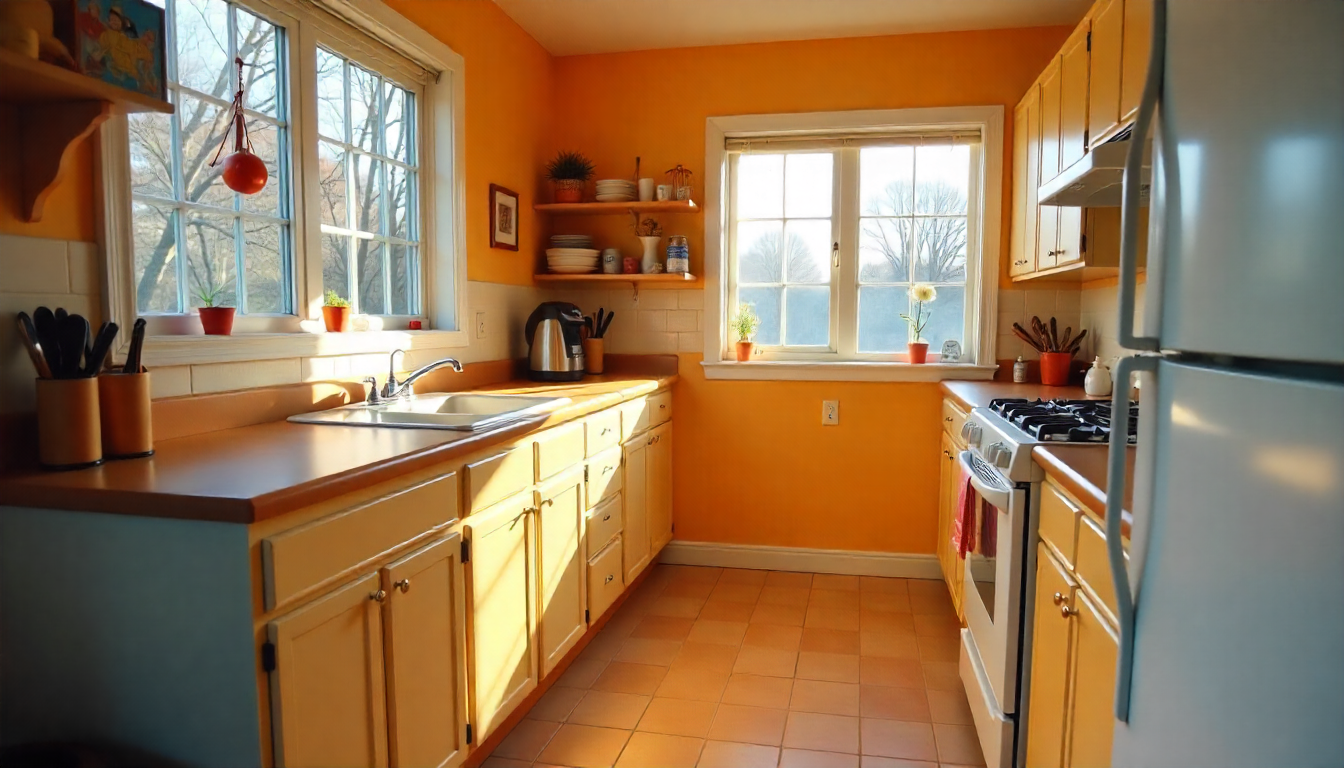
Though it might seem like an simple shortcut, dragging big equipment over your kitchen countertop is among the most destructive behaviours you can develop and one that fits clearly in the “Unsafe Zone.” The friction that results from sliding things like stand mixers, coffee machines, air fryers, or blenders instead of lifting them could damage the surface with scratches, chips, or severe gouges.
Even minor scratches can dull the finish on marble, granite, quartz, or solid surface counters and produce microscopic fissures where germs and dust could gather. Dragging might cause peeling edges, dents, and obvious wear patterns on softer surfaces like laminate or wood that would be difficult, if not impossible, to fix without a total replacement.
@ampquartzcabinets Mak jangan risau, buat pocket door macamni kita dah siap pasang socket plug sekali! ☺️ #AmpQuartz #pocketdoor #smartkitchen #5galuminium #fyp
♬ original sound – AmpQuartz – AmpQuartz
Apart from purely cosmetic damage, the act of dragging can also stress the countertop’s joints and seams, maybe weakening adhesive bonds throughout time, especially in modular or sectioned installations. This limits your investment’s general lifespan and impairs its structural integrity. In certain situations, the great weight together with sliding can even result in hairline fractures that might grow with heat exposure or daily use.
To avoid this, always lift appliances when moving them and think about putting felt pads or protective mats under heavier items to reduce friction. Besides keeping your countertop beautiful and functional, this easy habit saves you from expensive repairs or early replacements. Keep in mind: your countertop is a vital work surface deserving of care and protection; it is not a runway for devices.
The Unsafe Zone 5: Leaving Stains Overnight
Though it may appear simple, leaving stains overnight on your kitchen countertop is among the most destructive habits you can possess. Many foods and beverages including coffee, tea, red wine, turmeric, soy sauce, and even tomato sauce include intense pigments that can seep deep into the surface if left long enough.
For lighter coloured countertops or porous materials like marble, granite, or some quartz composites, stains can become permanent despite scrupulous cleaning, which is particularly dangerous. Even purportedly “stain resistant” materials might lose their sheen, discolour, or etch if spills are not quickly treated. Overnight exposure allows staining compounds time to seep into surface coatings or micropores, hence making removal difficult and occasionally necessitating expert treatment. Aggressive washing can scratch the surface or compromise sealants in other situations, hence shortening the life of your counter top.
Apart from appearance, caught food particles can promote bacterial development, therefore compromising kitchen hygiene. Simple prevention calls for soft cloth and mild, surface-appropriate cleaner to remove spills immediately. For tenacious marks, mild baking soda pastes or brand-recommended stain removers might help without hurting the finish.
Additionally lowering the possibility of stains developing in the first place is adding protective practices including using coasters, cutting boards, and trivets. Ignoring a spill until morning finally turns a fast wipe into an hours-long restoration project or, worse, leaves a permanent reminder of that “just one time” you didn’t clean up. Your countertop should be treated like the centre it is; it will last lovely and practical for years.
Sign Up For Kitchen Design Ideas
Join over 5,000 homeowners subscribed to our newsletter!

